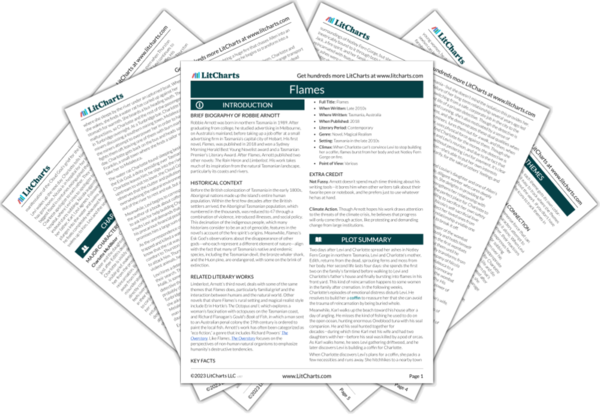The Esk God finds himself unable to fight back against the man who trapped him. His force and might, which allow him to reign over the Esk Rivers, are no match for human strength and technology, which suggests that when humans set out to fulfil only their own desires, they put the natural world at risk. This is the second dream mentioned in the novel, and, like the first, it involves large-scale natural transformation, which foreshadows a real, major, perhaps even catastrophic natural event.


